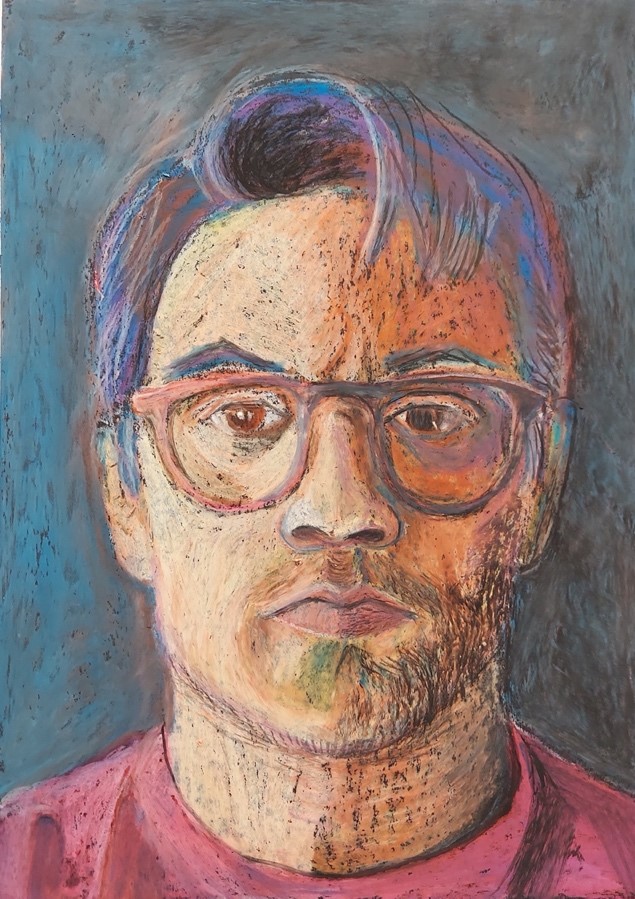Overview
Students will finish their expressive self-portraits by adding details and a background.
Materials and Tools
- Self-portrait from previous session
- Oil pastels
- Mirror
Objectives
Students will understand that:
- Artists add details to make their self-portrait look more exciting and interesting.
- Artists can add a background to make their drawing appear more complete.
Students will be able to:
- Add details to their self-portrait.
- Add a background to their drawing.
Activities
Introduce the following vocabulary:
Details: small elements that convey more information about a subject
Background: what’s behind the subject of a portrait
Close Looking
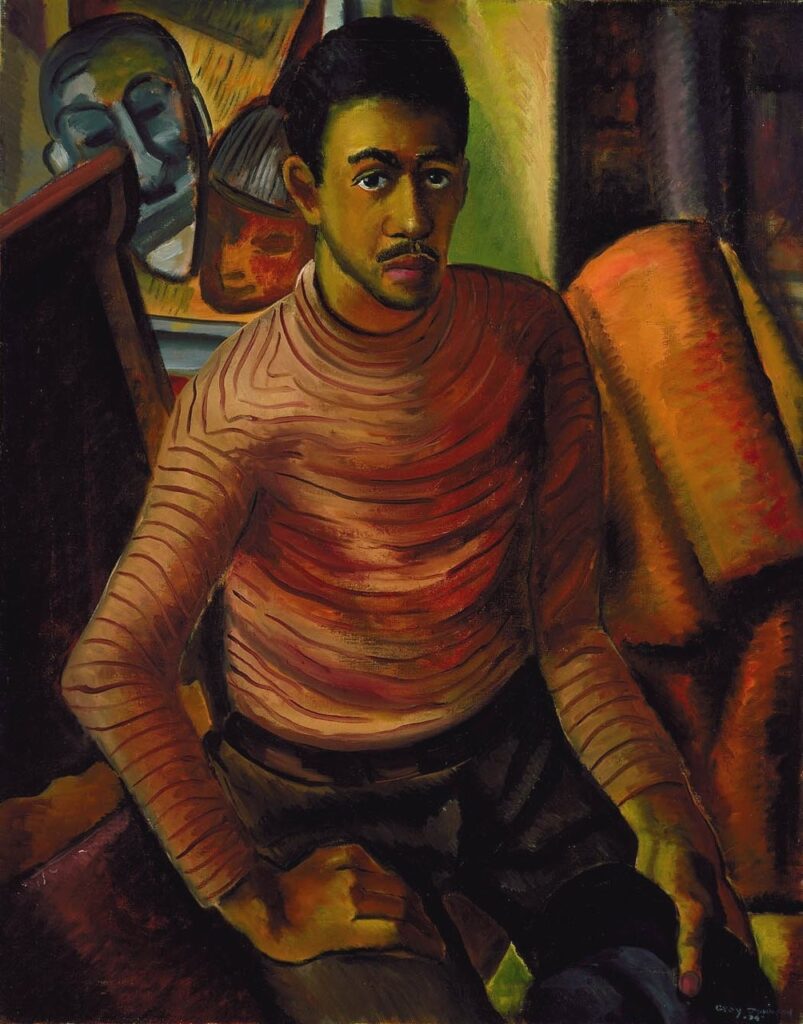
Questions for Discussion:
- What is one detail this artist included in their self-portrait?
- What does this detail tell you about the subject?
- Where do you think the artist is? Why do you say that?
- What do the details in the background tell you about this person?
Revisit your self-portrait.
Demonstrate looking over your drawing with fresh eyes.
Is there anything that needs adjustment—placement, color, or value?
Demonstrate making any needed edits to the structure and features of your self-portrait before moving onto the details and background.
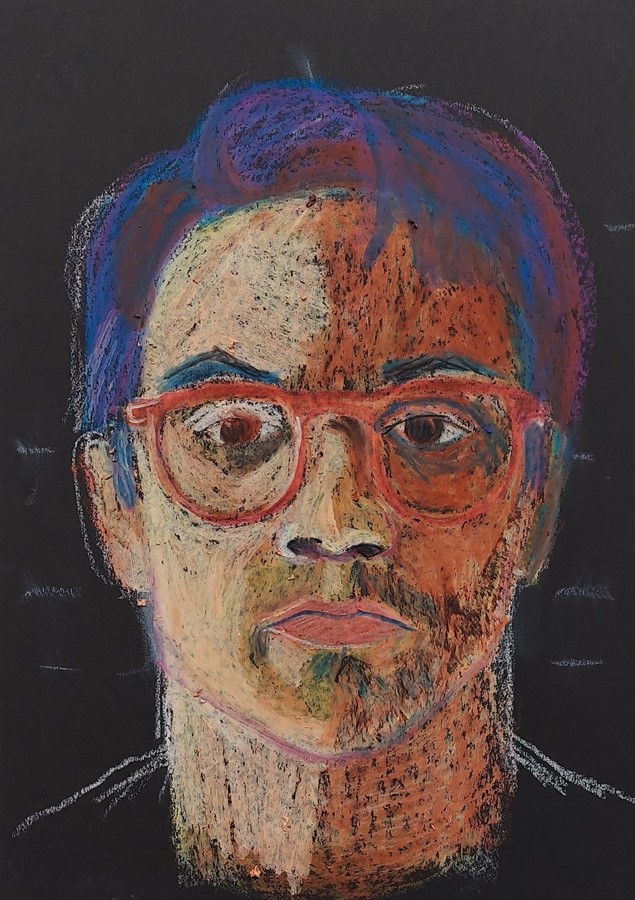
Draw any important details.
What details make you look like you?
Demonstrate drawing your facial details now.
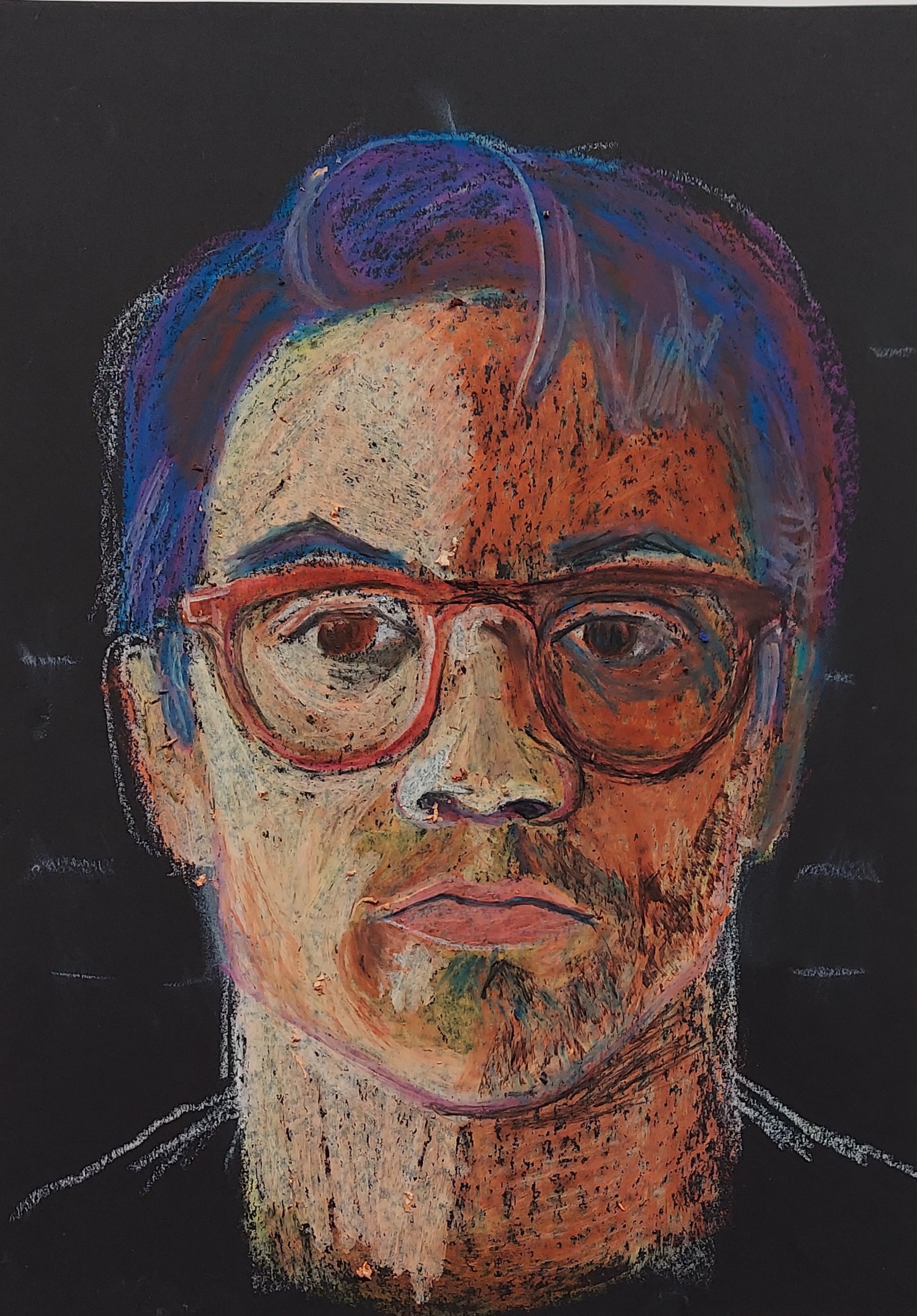
Draw your shoulders and clothing.
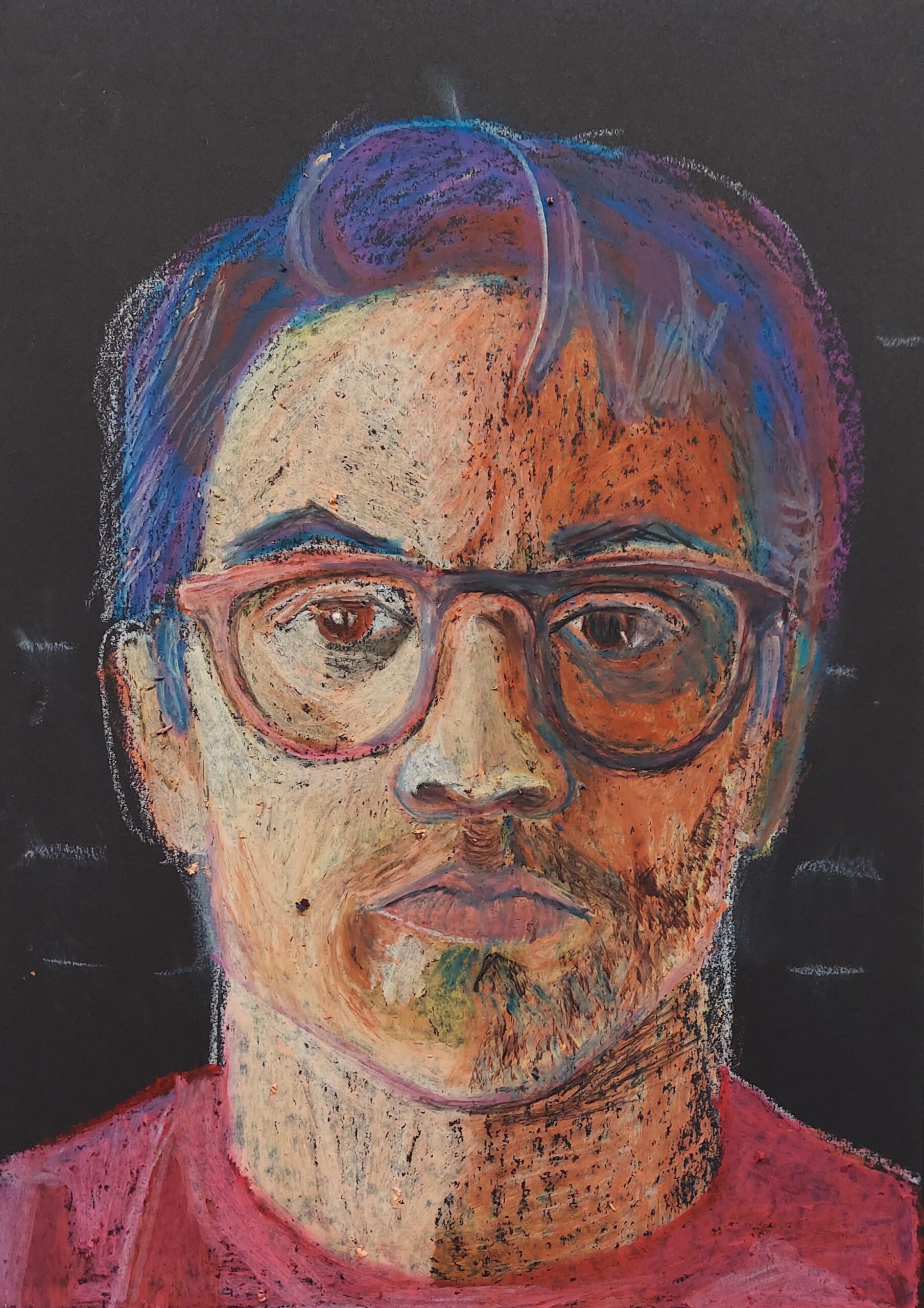
Demonstrate looking into the mirror to point out the relationship between your head and your shoulders. Use a light-colored oil pastel to draw your shoulders.
What color will you make your clothing?
Will you wear something simple or detailed?
Will you include any jewelry?
Demonstrate developing your clothing and include any highlights or shadows.
Develop your background.
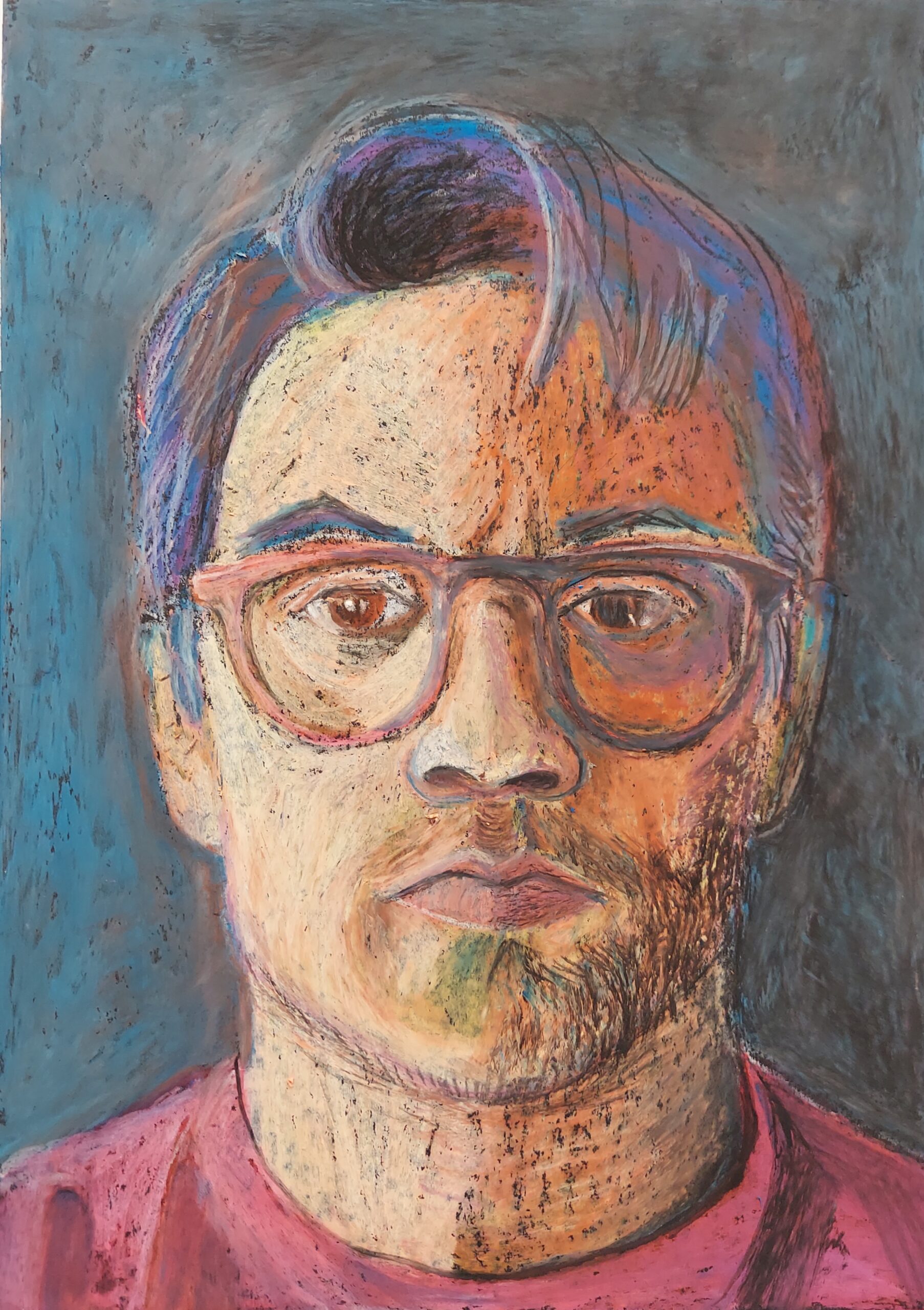
Share that adding a background will complete a self-portrait.
Present different approaches to making a background.
- Keep it simple, focusing on color and value.
- Draw the actual place where you are.
- Include things that might tell us something about you or your interests.
Demonstrate developing the background in your drawing.
Reflection Questions for Discussion
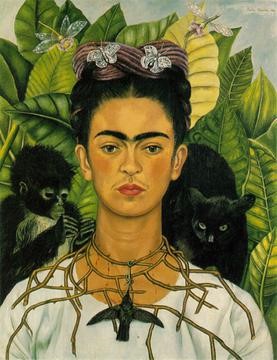
- Looking at how other artists make expressive self-portraits can help you with your own.
- Look at portraits by these artists for ideas:
- How did these artists express themselves in their artwork?
Resources
Frida Kahlo, Self-Portrait with Thorn Necklace and Hummingbird,1940

